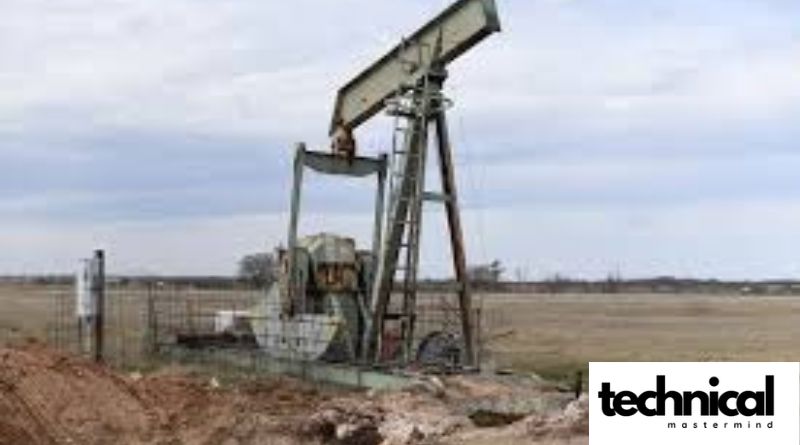An Oil Well From Which Oil Flows Quickly Without Being Pumped
The phenomenon of oil wells from which oil flows without the need for mechanical pumping has intrigued both the oil industry and the scientific community. These natural occurrences, often referred to as “natural flow” or “free-flowing” wells, represent a fascinating aspect of geology and petroleum engineering. In this article, we will delve into how these oil wells operate, the geological conditions that allow for such phenomena, and their significance in the broader context of oil extraction and management.
Understanding Natural Flow Oil Wells
An oil well is considered to be free-flowing when it can produce oil solely due to the natural pressure within the reservoir, eliminating the need for pumps or other mechanical devices. This natural pressure is typically a result of the gas that is dissolved in the oil, which expands as the pressure is released during extraction. Such wells can exhibit remarkable production rates, delivering large volumes of oil with minimal operational input.
Natural flow is a rare occurrence and is often only seen in certain geological conditions. These conditions usually involve a combination of the right type of reservoir rock, sufficient pressure from gas or water, and a favorable fluid composition. The underlying mechanics of how oil wells can produce without pumping are deeply tied to the principles of fluid dynamics and reservoir engineering.
The Geological Formation of Free-Flowing Oil Wells
To understand how an oil well can flow naturally without pumping, one must first consider the geology of oil reservoirs. Oil forms from the remains of ancient marine organisms, which, over millions of years, are subjected to heat and pressure, transforming them into hydrocarbons. These hydrocarbons migrate through porous rock layers until they become trapped under impermeable rock formations, creating a reservoir.
In certain situations, the conditions within the reservoir lead to the development of high pressure. For instance, if a gas cap is present above the oil, the gas can exert considerable pressure on the oil below. When the well is drilled, and the pressure is released, the oil can flow freely to the surface due to the pressure differential created by the gas.
In addition to gas caps, natural water drive mechanisms can also contribute to the phenomenon. When a reservoir is overlaid by a water layer, the pressure from the water can assist in pushing oil toward the wellbore, promoting free flow.
Factors Influencing Free Flow in Oil Wells
Several factors influence whether an oil well can flow freely without the aid of pumps. These include:
- Reservoir Pressure: The initial pressure within the reservoir is critical. Higher pressures generally correlate with the potential for free flow. Over time, as oil is extracted, the pressure may decline, eventually necessitating the use of pumps.
- Fluid Characteristics: The viscosity and density of the oil affect how easily it can flow. Lighter oils tend to flow more easily compared to heavier oils, which may require pumping to move through the reservoir.
- Reservoir Rock Properties: The porosity and permeability of the reservoir rock determine how fluids can move through it. High porosity allows for greater storage of oil and gas, while high permeability enables easier flow.
- Production Techniques: Although free-flowing wells may initially not require pumps, production techniques can influence the long-term productivity of a well. Techniques such as water injection or gas injection can artificially maintain reservoir pressure, extending the life of a well and its capacity for free flow.
The Lifecycle of an Oil Well: From Natural Flow to Pumping
Even in wells that initially flow freely, the lifecycle of oil production often leads to a decline in natural pressure over time. As oil is extracted, the reservoir’s pressure decreases, and eventually, pumping may become necessary to maintain production levels. This transition can be seen in many oil fields worldwide.
Operators must carefully monitor the pressure and production rates to determine when to implement mechanical pumping solutions. The introduction of pumps allows for continued extraction even as natural pressure declines, although it can significantly increase operational costs and complexity.
Economic Implications of Free-Flowing Oil Wells
The economic benefits of free-flowing oil wells are significant. First and foremost, they reduce operational costs. Without the need for pumping equipment, the initial setup costs can be lower, and ongoing maintenance costs are reduced. Additionally, the high initial production rates of free-flowing wells can lead to quicker returns on investment, making them particularly attractive for oil companies.
Moreover, the ability to produce oil without pumping also has environmental implications. Reduced reliance on mechanical extraction can lead to a smaller carbon footprint and less environmental disturbance associated with drilling and maintaining pumping equipment.
Challenges and Limitations of Free-Flowing Oil Wells
Despite their advantages, free-flowing oil wells are not without challenges. The most pressing concern is the sustainability of such wells. As mentioned, over time, natural pressure diminishes, and production rates may decline. Operators must be prepared for this eventuality and develop strategies to manage the transition to mechanical pumping.
Additionally, the geology of a region can limit the number of free-flowing wells that can be developed. Not all reservoirs have the necessary characteristics for natural flow, which means that many oil fields will always rely on pumping technology.
Environmental Considerations
The extraction of oil, whether through free-flowing wells or pumped systems, carries inherent environmental risks. Oil spills, groundwater contamination, and habitat disruption are significant concerns. As free-flowing wells can operate with less mechanical intervention, they may pose a lower immediate environmental risk, but long-term monitoring and management practices are essential to ensure that they do not contribute to environmental degradation.
Sustainable practices in oil extraction, including minimizing the environmental footprint and considering alternative energy sources, are increasingly critical in the face of climate change. Innovations in technology and a shift toward renewable energy sources are essential for the future of energy production.
Conclusion: The Future of Free-Flowing Oil Wells
As the global energy landscape evolves, the role of free-flowing oil wells remains significant. While they represent a fascinating natural phenomenon, their long-term viability depends on sustainable practices and innovative extraction techniques. Understanding the geological and economic factors that contribute to free flow can help optimize production and ensure that these valuable resources are managed effectively.
In conclusion, while an oil well from which oil flows quickly without being pumped offers numerous advantages, it also presents unique challenges that require ongoing attention. Balancing economic viability with environmental stewardship will be essential as we move forward in our quest for sustainable energy solutions.
The allure of natural flow wells continues to capture the imagination of both engineers and geologists, representing a perfect intersection of natural resource management and cutting-edge technology. As research and exploration continue, we may discover more about these fascinating systems and their potential role in the future of energy production.
Read also: check














Post Comment